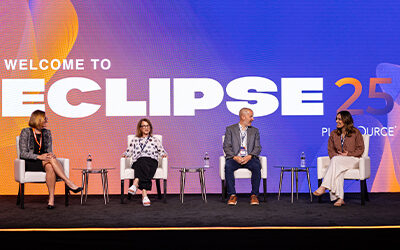From Family to Finance: The ROI of Supporting Caregivers
Guest Post | Cleo
Here’s a thought experiment.
Let’s say you have a fulfilling and important job. You’re engaged in your workplace and want to succeed, to both deliver on your responsibilities and grow your career.
But at the same time, you also have another fulfilling and important job — you’re a caregiver. Maybe you’re the parent of a toddler, maybe a teenager, maybe a handful of children in between. Or maybe you’re expecting a new baby or helping care for an aging parent. Perhaps, like more than 20% of the U.S., you’re doing all of the above.
What would you imagine a typical work week look like for you in this position? It would probably be hectic, stressful, and take a toll on your mental health — not to mention your ability to focus or even be present at the office. In actuality, the vast majority of U.S employees are caregivers — a whopping 73% of your workforce — and many of them are in this exact same position.
The hidden costs of parenting and caregiving
We know that many employees are struggling with stress and burnout. But caregivers — those who are parents or taking care of older adults — are especially vulnerable:
- Companies lose $44 billion annually due to care-related absenteeism.
- 23% of caregivers say caregiving has made their health worse.
- Nearly 1 in 4 (23.3%) of the estimated 8.8 million employed family caregivers reported either absenteeism or presenteeism over a 1-month period owing to caregiving.
Cleo’s Family Health Index™ report further reveals some eye-opening statistics:
- 90% of caregivers reported an impact on self-care and general health.
- 85% are feeling burdened and are on the path to burnout.
- 57% of caregivers lost at least 1 day of work per month due to caregiving responsibilities.
- 44% had a positive screening test for depression and/or anxiety.
We know that companies have employees who are stressed out, burnt out, absent, present but distracted, need mental health support, and often cost them significant medical, loss of institutional knowledge, impact to productivity, recruitment, retention, and absentee spend because of it. Many of these areas are “hidden costs,” as most caregivers hide their parenting and caregiving duties from their managers for fear of being labeled “distracted”.
The growing Sandwich Generation
On top of the above stats, more than 20% of unpaid family caregivers today belong to the “sandwich generation.” That means they’re simultaneously caring for children and aging family members, which means they have compounded responsibilities and intersecting stressors. Many of these employees are in higher-level management positions, as well. It’s a tough spot to be in and has an even greater impact on work performance than those not caregiving on multiple fronts.
What can employers do?
- Be truly flexible. Prioritize exactly what your employees need to get done, and encourage them to get it done on their own time — simple as that. You can work together to determine what meetings they need to be present at or when they need facetime with the rest of the team, but other than that, understand that flexible hours support caregivers best.
- Be open to all family structures and talk about them. The vast majority of the workforce are caregivers, so talk about it! Managers and executives can set examples by talking about their kids or being open about taking a vacation day to help their aging parents. The more normalized caregiving is in your workplace, creating psychological safety, the more honest employees will be when they need support.
- Institute paid leave and strong offboarding and onboarding. Allowing your employees who have recently given birth or adopted a child to have time off, or allowing your employees to take a leave to care for an adult loved one, in turn allows them to disconnect completely and then come back refreshed and ready to work. Ensuring that their offboarding and onboarding before and after leave goes smoothly not only supports he employee, but the rest of their team, too.
- Invest in a family benefits solution. Instead of wondering who your parents and caregivers are in your workforce, invest in an end-to-end solution like Cleo to support the vast majority of your employees — not just the ones growing their families or raising babies, but those who are raising kids and teens and need support for aging adults and themselves, too.
Caring for caregivers drives ROI
By offering targeted support, like helping employees sort through daily caregiving responsibilities, providing practical and emotional support, and connecting employees to resources both within Cleo and within other company benefit offerings, Cleo creates meaningful outcomes:
- 12 hours of work time on average saved from Cleo support
- 10+ hrs of time savings for finding child care, often during typical working hours
- 100% improvement of mental health scores for members who initially had a severe risk PHQ-4 mental health screening
- $2,109 average cost savings per employee who initially screened positive for Perinatal Mood & Anxiety
- 47% lower U.S. Cesarean birth rates than the national average
Plus, more than 84% of Cleo members report that Cleo saves time by getting them the resources, answers or help needed as a working parent and/or caregiver. That’s time that they can then invest back into the workplace.
Families don’t fit into neat little boxes. Parents and caregivers and those looking to grow their families also want to do good work — they want to bring their whole selves to the job, and that means acknowledging that they have lives outside of work that need tending to. When companies acknowledge the whole people that work for them, they retain employees, save on hard costs and foster a healthy and productive workplace.
Cleo is the only global end-to-end family benefit out there; from family creation and growth to pregnancy and postpartum, to toddlers, kids, teens, and adult caregiving, to caregiver self-care and menopause support.
Empathy, Innovation & Action: Top Takeaways from HR Leaders Who Spoke at Eclipse
Empathy, Innovation & Action:Top Takeaways from the HR Leaders Who Spoke at...
Charting the Future of PlanSource: Our Vision for What’s Ahead
Discover how PlanSource unveiled game-changing AI innovations at Eclipse 2025, transforming how HR leaders manage benefits and how employees choose them. The future of benefits starts here.
Navigating New Requirements with the Paperwork Burden Reduction Act
Navigating New Requirements with the Paperwork Burden Reduction...




